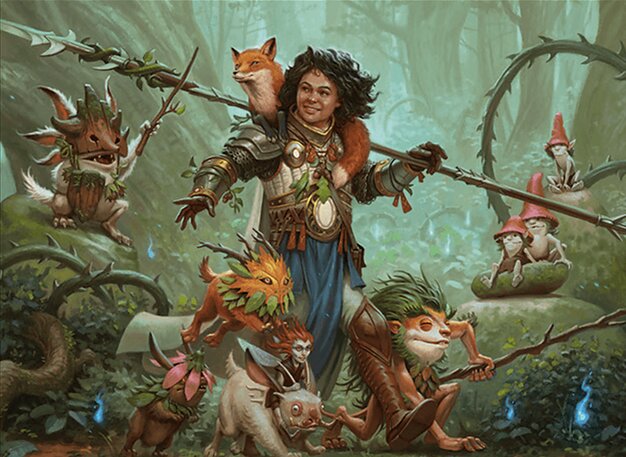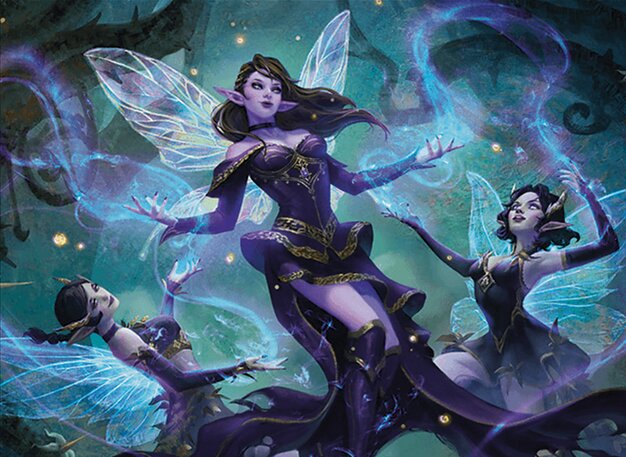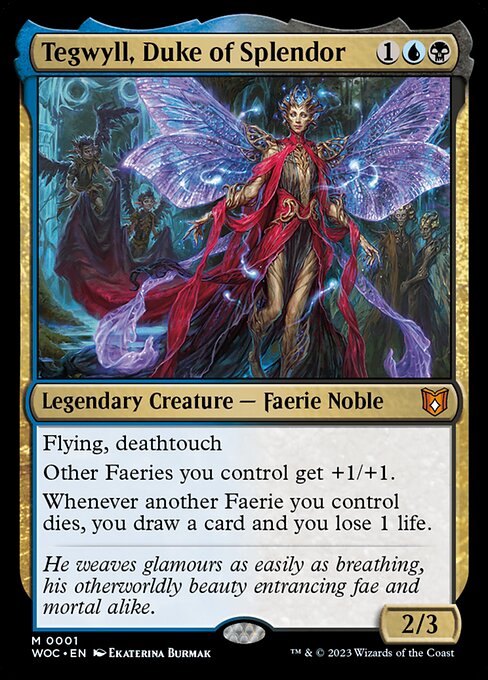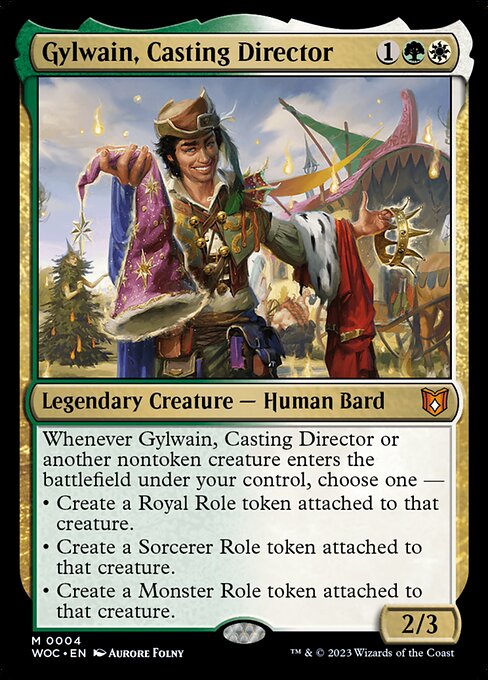Deck & Commander Strategies

Tegwyll, Duke of Splendor
A fairy tribal deck focused on generating numerous fairies to trigger card draw and life loss effects, leveraging the synergy between fairies and sacrifice for advantage.

Ellivere of the Wild Court
An enchantment-focused commander that draws cards whenever an enchanted creature deals combat damage, supporting an enchantment-heavy build with tokens and powerful auras.

Gylwain, Casting Director
A commander that assigns roles to creatures, creating enchantment tokens that synergize with the deck's broader enchantment and token strategies to overwhelm opponents.

Alela, Cunning Conqueror
An enchantment and artifact synergy deck that creates faerie tokens and benefits from casting instant and sorcery spells, aiming to control the board and generate value through tokens.
Gameplay Insights
- 1
Meddling Nuisance's ability to generate goaded pirate tokens upon fairies dealing combat damage significantly pressured the fairy decks and shaped combat decisions.
- 2
Tegwyll's mandatory draw and life loss on fairy deaths created a tension between maintaining board presence and resource advantage.
- 3
Gylwain's role assignment mechanic allowed for continuous token production, enabling sustained board development and synergy with enchantments.
- 4
The interplay between enchantment token generation and fairy tribal synergy led to dynamic board states that required careful timing and combat choices.
- 5
Early ramp plays such as sacrificing Crows and Verge for multiple lands accelerated mana development, allowing players to cast high-impact creatures and commanders earlier.
Notable Cards
-

Tegwyll, Duke of Splendor
-

Gylwain, Casting Director
Gameplay Summary
The game began with players developing their boards and ramping mana, with some early tension between the fairy tribal decks and enchantment-focused decks.
One early pivotal moment was the deployment of Meddling Nuisance, which threatened the fairy decks by generating goaded pirate tokens whenever fairies dealt combat damage, applying pressure on the table.
The fairy decks, led by Tegwyll, Duke of Splendor and Ellivere of the Wild Court, worked on building a wide board presence with numerous fairies that synergized with card draw and life loss effects.
Meanwhile, enchantment decks like Alela, Cunning Conqueror and Gylwain, Casting Director focused on creating enchantment tokens and leveraging enchantment synergy to generate value and board presence with cards like Satessen Champion and Johnny's Chosen. As the game progressed, the board state shifted with each player deploying their commanders, which acted as both threats and enablers for their respective strategies.
Tegwyll's ability to draw cards and lose life whenever a fairy dies created a constant flow of resources, while Gylwain's role assignment mechanic allowed for token generation and continuous pressure.
Combat interactions, including goaded tokens and targeted attacks, influenced player decisions and alliances temporarily, with the fairies aiming to outpace the enchantment decks.
The game showcased a dynamic interplay of tribal synergies, enchantment triggers, and token generation leading to escalating board states and tactical combat decisions that set the stage for potential fairy tribal dominance or enchantment-driven control.


















![Wilds of Eldraine Pack Tactics!! ft. Ellivere, Will, Rowan, and Alela [EDH/Commander Gameplay 2023] thumbnail](https://i.ytimg.com/vi/16dZz59VH0A/sddefault.jpg)










![Wilds of Eldraine pre-con brawl EP: 19 Korvold v Ellivere v Alela v Tegwyll [EDH gameplay] thumbnail](https://i.ytimg.com/vi/VwaZIOSZZNk/sddefault.jpg)




